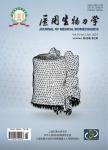Organization and Ultra-Structural Components of Endothelial Surface Glycocalyx Revealed by Stochastic Optical Reconstruction Microscopy(STORM)
Organization and Ultra-Structural Components of Endothelial Surface Glycocalyx Revealed by Stochastic Optical Reconstruction Microscopy(STORM)作者机构:Department of Biomedical Engineeringthe City College of the City University of New YorkNew YorkNY 10031USA Department of Electrical Engineeringthe City College of the City University of New YorkNew YorkNY 10031USA
出 版 物:《医用生物力学》 (Journal of Medical Biomechanics)
年 卷 期:2019年第34卷第A1期
页 面:6-7页
核心收录:
学科分类:0831[工学-生物医学工程(可授工学、理学、医学学位)] 08[工学]
基 金:supported by NIH-1SC1CA153325-01 NSF-MRI CBET 1337746 and 1UG3TR002151-01
主 题:Organization Ultra-Structural Components Endothelial Surface Glycocalyx Revealed Optical Reconstruction Microscopy STORM
摘 要:Introduction The endothelial cells(ECs)lining every blood vessel wall constantly expose to the mechanical forces generated by the blood flow.The EC responses to these hemodynamic forces play a critical role in the homeostasis of the circulatory system.In addition to forming a transport barrier between the blood and vessel wall,vascular ECs play important roles in regulating circulation functions.Besides biochemical stimuli,blood flow induced(hemodynamic)mechanical stimuli,such as shear stress,pressure and circumferential stretch,modulate EC morphology and functions by activating mechanosensors,signaling pathways,and gene and protein expressions.The EC responses to the hemodynamic forces(mechano-sensing and transduction)are critical to maintaining normal vascular functions.Failure in the mechano-sensing and transduction leads to serious vascular diseases including hypertension,atherosclerosis,aneurysms and thrombosis,to name a few[1].On the luminal surface of our blood vessels,there is a thin layer called endothelial surface glycocalyx(ESG)which consists of proteoglycans,glycosaminoglycans(GAGs)and glycoproteins.The GAGs in the ESG are heparan sulfate(HS),hyaluronic acid(HA),chondroitin sulfate(CS),and sialic acid(SA)[2].In order to play important roles in vascular functions,such as being a mechanosensor and transducer for the endothelial cells(ECs)to sense the blood flow,a molecular sieve to maintain normal microvessel permeability and a barrier between the circulating cells and endothelial cells forming the vessel wall,the ESG should have an organized structure at the molecular level.Due to the limitations of optical and electron microscopy,the ultra-structure and organization of ESG has not been revealed until recent development of a super high resolution fluorescence optical microscope,STORM(Stochastic Optical Reconstruction Microscopy).The diffraction of a single fluorescence molecule can be described as the point spread function(PSF).When the light of wavelengthλexcites the fluorophore(emitter),the intensity profile of the spot is defined as the PSF with the width^0.6λ/NA,NA is the numerical aperture of the objective.The diffraction-limited image resolution,for a high numerical aperture objective lens,is^200 nm in the lateral direction and^500 nm in the axial direction,for a conventional fluorescence microscope.The key idea of the single-molecule localization microscopy is to light the molecule,in turn,to achieve the nanometer-level accuracy of their position and reconstruction into a super-resolution image,such as STORM.STORM employs photo-switching mechanisms to stochastically activate individual molecules(photo-switchable or photoactivatable fluorophores)within the diffraction-limited region at different times.Then images with sub-diffraction limit resolution are reconstructed from the measured positions of individual fluorophores[3].To trade the super spatial resolution(accuracy),STORM sacrifices its temporal resolution(efficiency)by switching the state and sequentially exciting the emitters at a high density.Rust et al[3]employed organic dyes and fluorescent proteins as photo-switchable emitters to trade temporal resolution for a super spatial resolution(~20 nm lateral and^50 nm axial at present,can go down to a couple of nanometers if using smaller peptides or antibody fragments instead of currently used whole anti-bodies),which is an order of magnitude higher than conventional confocal microscopy.In the current study,we employed STORM to reveal the major ultra-structural components of the ESG,HS and HA,and their organization at the surface of the cultured EC monolayer[4].Materials and methods We used newly acquired Nikon-STORM system to observe the ESG on in vitro EC(bEnd3,mouse brain microvascular endothelial cells)monolayers.After confluency,the bEnd3 cells were immunolabeled with anti-HS,fol-lowed by an ATT0488 conjugated goat anti-mouse IgG,and with biotinylated HA binding protein,followed by an AF647 conjugated anti-biotin.The ESG was then imaged by the STORM with a 100x/1.49 oil immersed lens.Multiple Reporters of ATT0488 and AF647 with alternating illumination were used to acquire the 3D images of HS and HA.The field of 256×256(40×40μm2)of HS and HA at the surface of ECs was obtained based on totally 40,000 of EM-CCD captured images for each reporter at a capturing speed of 19 ms/frame.Results HA is a long molecule weaving into a network which covers the endothelial luminal surface.The diameter of the HA segments is 185.3±44.7 nm,155.5±57.2 nm,and 156.9±56.1 nm,respectively,at the top,middle and bottom regions of the cell luminal surface.In contrast,HS is a shorter molecule,perpendicular to the cell surface.HA and HS are partially overlapped with each other at the endothelial luminal surface.We quantified the length,diameter,orientation,and density of HS at the top,middle and bottom regions of the endothelial surface.The diameter of the observed HS is 191.0±46.0 nm,284.3±71.1 nm,and 184.2±59.6 nm,and the length of the HS is 621.0±75.7 nm,651.0±118.0 nm,and 575.2±105.6 nm,respectively,at the top,middle and bottom regions of the cell luminal surface.For the HS orientation,its angle with the cell surface is 92.9±1.9,88.7±8.2,and 96.2±10.9 degree,respectively,at the top,middle and bottom regions.The angle of 90 degree is perfectly perpendicular to the cell surface.For the HS distribution,the average density is0.398 elements/μm2,0.345 elements/μm2 and 0.665 elements/μm2,respectively,and the distance between the adjacent HS is 1 694.4±628.1 nm,1 844.8±758.5 nm,and 1 221.9±450.7 nm,respectively,at the top,middle and bottom regions.Conclusions Our results suggest that HS plays a major role in mechanosensing and HA plays a major role in the molecular sieve,due to their organization,ultra-structure and distribution.



